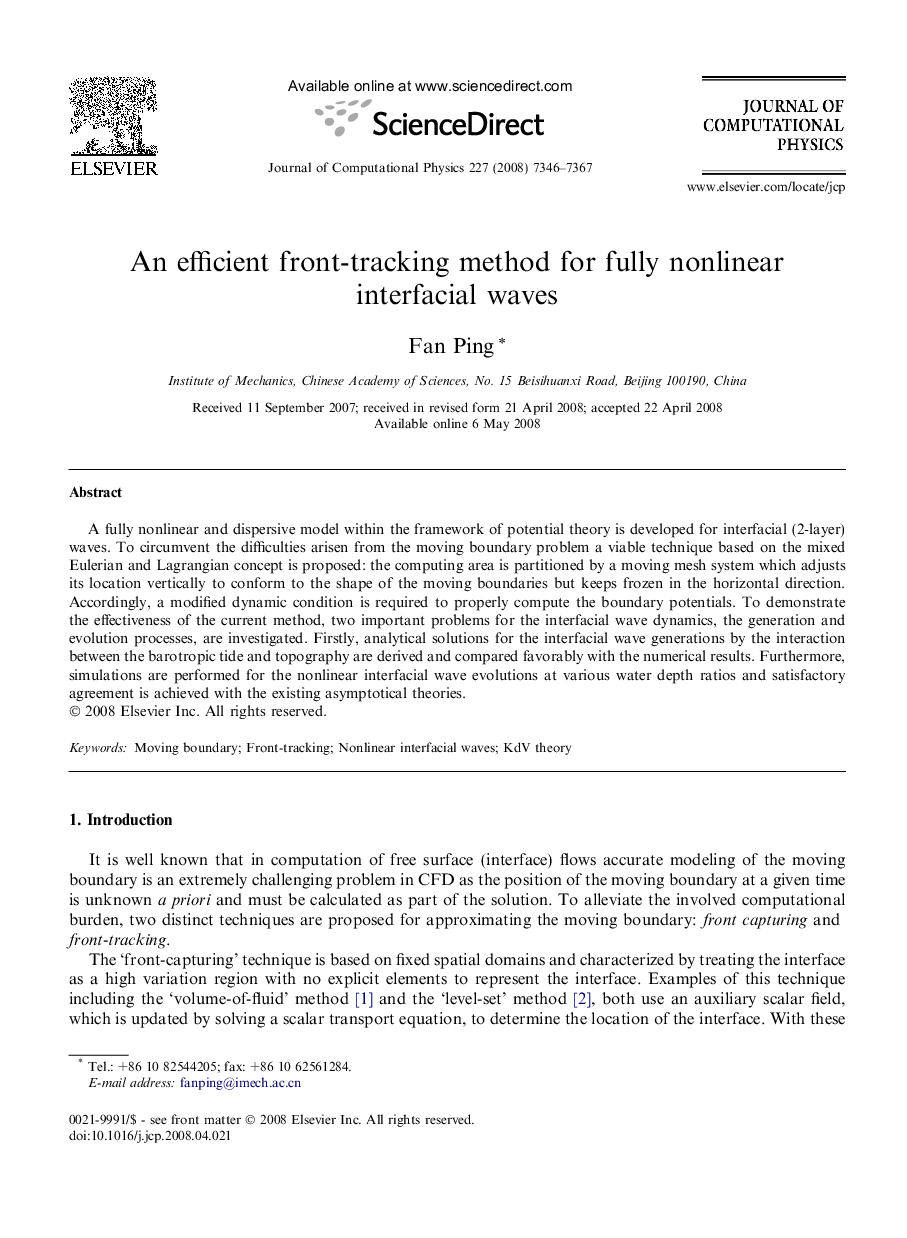| Article ID | Journal | Published Year | Pages | File Type |
|---|---|---|---|---|
| 520515 | Journal of Computational Physics | 2008 | 22 Pages |
A fully nonlinear and dispersive model within the framework of potential theory is developed for interfacial (2-layer) waves. To circumvent the difficulties arisen from the moving boundary problem a viable technique based on the mixed Eulerian and Lagrangian concept is proposed: the computing area is partitioned by a moving mesh system which adjusts its location vertically to conform to the shape of the moving boundaries but keeps frozen in the horizontal direction. Accordingly, a modified dynamic condition is required to properly compute the boundary potentials. To demonstrate the effectiveness of the current method, two important problems for the interfacial wave dynamics, the generation and evolution processes, are investigated. Firstly, analytical solutions for the interfacial wave generations by the interaction between the barotropic tide and topography are derived and compared favorably with the numerical results. Furthermore, simulations are performed for the nonlinear interfacial wave evolutions at various water depth ratios and satisfactory agreement is achieved with the existing asymptotical theories.
